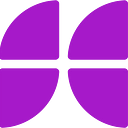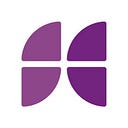Lucy’s squiggly career
I have always been interested in design and as a frontend developer I had experience building user interfaces for our Originations product. Over time I became more interested in learning about building the right thing rather/as well as building the thing right, so to explore this I signed up to a part-time, 4 week, short course on UI design (https://designlab.com/ui-design-course/) with DesignLab in February 2020. This course gave me a good introduction to the fundamentals of user-interface (UI) design.
Early the following year I started conversations with my manager about my career path. I didn’t see myself progressing in a linear fashion towards a senior engineering role or engineering management and instead became interested in moving sideways to a design focussed role or eventually a design engineering role (I’ll discuss what design engineering is and its benefits later in this blog).
Funding Circle has always been supportive of employees moving sideways, as well as up. In fact, our career development month back in November focused on the theme of squiggly careers. During the course of the month, the company put on a number of great events and workshops including one hosted by Helen Tupper, co-founder and CEO of Amazing If. The workshop covered what squiggly careers mean and discovering the 5 skills you need to be able to succeed while pursuing them. Although I attended this shortly after completing the course there was a lot of interesting content that resonated with me and reinforced why I wanted to move sideways, as well as the skills needed to do so. Something from the workshop that stood out to me was a definition of strengths that came from Marcus Buckingham’s take on the real definition of a strength, which he defines as something that gives you energy, even if it is something you aren’t good at yet. This idea reaffirmed my move towards and interest in learning more about user interface (UI) design.
Originally my desire to learn more about UI and UX design was motivated by a longer-term career goal of mine to move into a hybrid design engineering role. I first heard this term on a podcast entitled Design Engineering by Clearleft. Although the role itself may be referred to by many different names — UX engineer, design engineer, design technologist, frontend designer or UI engineer — the purpose of this role remains the same — to connect the 2 disciplines of design and engineering. The need for design engineering roles becomes more apparent as products become increasingly complex.
The difference between ideas and products lies in the execution. When cross-functional collaboration is missing or there is a disconnect between design and engineering, there is a greater chance that all the hard work done during the design phase to create designs that solve user problems, won’t be converted into flexible, scalable solutions. The frontend landscape has become increasingly complex with testing, performance optimisation, tooling, systems design and integration becoming a vital part of a frontend engineers day-to-day role, there has been a divide in recent years in frontend development between those who are more design focussed and those who are more systems focussed and the idea is that a design engineer can help fit in where this gulf has appeared. A design engineer can take a design and bring it to life in order to quickly iterate on the design and see what does and doesn’t work in the browser. Thereby removing the need for a waterfall approach where design by a designer is followed by the build step by an engineer and replaces it with a more agile approach that allows for rapid prototyping in the browser to discover potential pitfalls early on and permits rapid iterations on the design based on those early discoveries. By specialising in the intersection of the disciplines of design and engineering they can fast-track design decisions and mitigate risk.
In order to be able to meet my longer-term goal of moving into a hybrid design engineering or more design focussed role I would need to improve my knowledge of UI and UX design. I discussed with my manager the possibility of doing the UX Academy run by DesignLab, over the course of 28-weeks when completing it on a part-time basis. The course involved 480 hours of UX design coursework and projects, which I completed with help and guidance from my mentor and at the end of the course I had built a portfolio (https://www.lucyoliphant.com/) with 4 projects to showcase my newfound skills.
My manager and Funding Circle were incredibly supportive and enabled me to do the course part-time by letting me take a mix of unpaid leave and also use my annual leave in order to study. My colleagues also helped out by taking part in user research interviews and usability testing of my designs and prototypes. Although it has been hard work it has been worth it. Having the opportunity to pick up new skills whilst working has been great and I’m looking forward to what comes next in my own squiggly career.
If you want to work for a supportive and progressive company like Funding Circle, then check out our careers page — https://careers.fundingcircle.com. We are growing and need more engineers to join us, to support our growth!
Written by Lucy Oliphant

